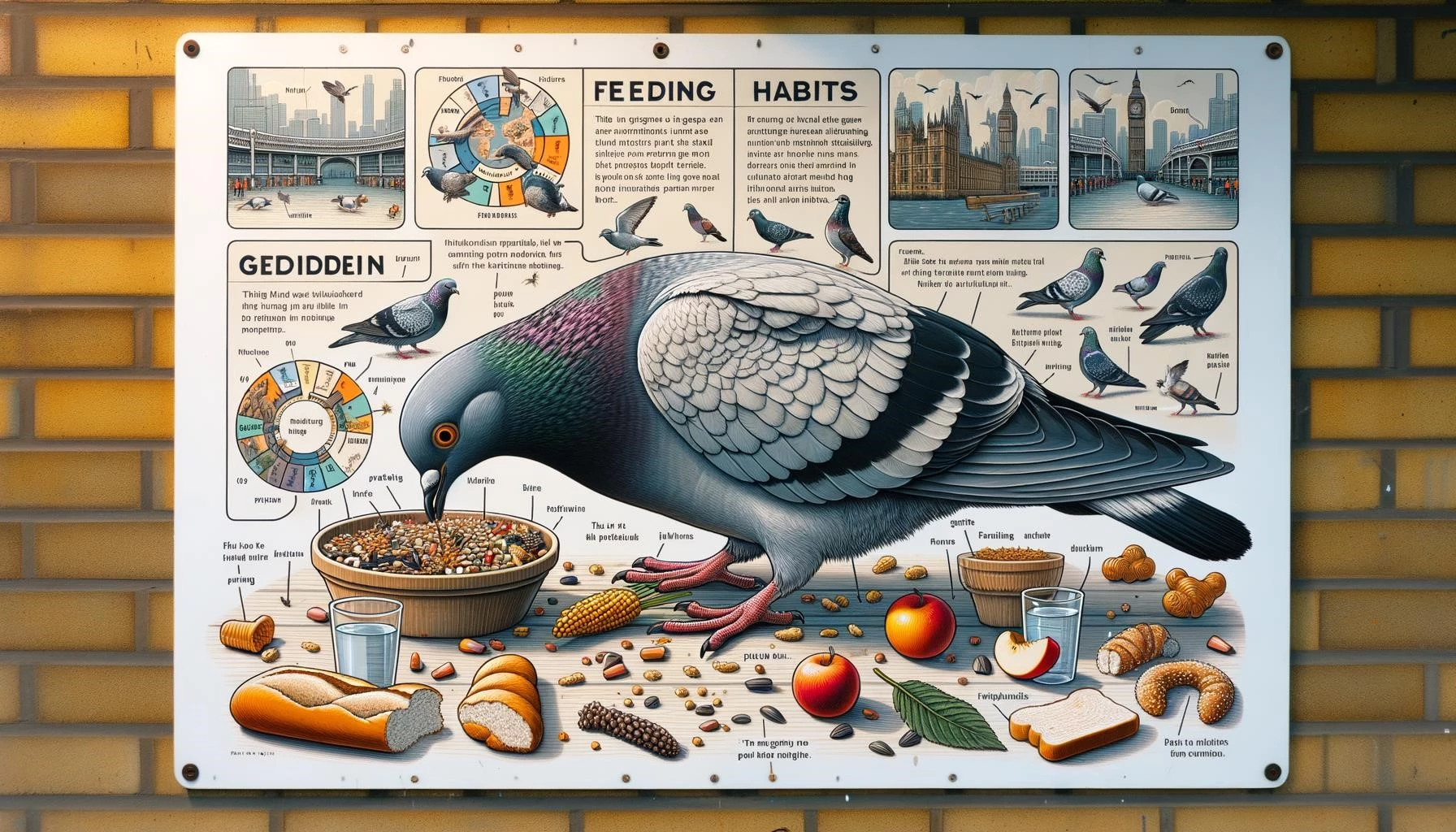Discover the fascinating world of pigeon feeding and the environmental considerations it involves. This comprehensive guide explores the diverse diet of these adaptable birds, the unique feeding of squabs, and the vital need for responsible feeding practices in the human environment. Learn about what to feed pigeons, the foods to avoid, and how their adaptable feeding behavior allows them to thrive in various habitats. Remember, your relationship with these birds can be rewarding, but it must be balanced with awareness of potential health risks and environmental impact.
Key Takeaways
- Pigeons have a diverse diet that includes seeds, grains, fruits, vegetables, insects, and worms.
- Pigeons kept as pets or in enclosures often have a healthier and more controlled diet than wild pigeons.
- Baby pigeons are initially fed on crop milk, a secretion produced in the stomach of adult pigeons and regurgitated to their young.
- Pigeons are adaptable birds and can adjust their feeding habits based on the available resources in their environment.
- Feeding pigeons should be done with caution to avoid attracting large flocks and potential health risks associated with their droppings.
Pigeons are adaptable when it comes to their diet and feeding habits. In their natural habitat, pigeons forage for seeds, berries, fruits, and grains. They can also consume insects and worms, which provide them with protein and essential nutrients. When kept as pets or in enclosures, pigeons are often fed a mixture of seeds, fruits, nuts, and vegetables to ensure a balanced diet.
Additionally, baby pigeons, known as squabs, are initially fed on crop milk. This special secretion is produced in the stomach of adult pigeons and regurgitated into the beaks of their young. Crop milk is high in fat and provides young pigeons with concentrated nutrients for rapid growth and development.
Pigeon Feeding and the Environment
When it comes to feeding pigeons, it’s crucial to consider the environment and potential consequences. Feeding pigeons can attract large flocks and create public health risks due to the spread of diseases through their droppings. Therefore, it is often discouraged to feed pigeons in public places.
If you choose to feed pigeons in your backyard or a controlled environment, it’s important to do so responsibly. Offering a seed mix that includes grains, seeds like millet, wheat, corn, and sorghum, along with fresh leafy vegetables, peas, berries, and nuts, can provide a healthy and varied diet for pigeons.
However, there are certain foods to avoid feeding pigeons. Avocado and apple seeds are toxic to pigeons and should be avoided. Foods high in salt, oil, caffeine, or chocolate are also not suitable for pigeons.
Adaptable Feeding Behavior of Pigeons
Pigeons are highly adaptable when it comes to their behavior and feeding habits. They can adjust their feeding patterns based on the availability of resources in their environment. For example, if food sources become scarce or nesting spots are limited, pigeons may change their feeding and nesting habits to adapt to the situation.
This adaptability allows pigeons to survive in a variety of habitats and urban environments where they coexist with humans. They can scavenge for food scraps discarded by humans and even feed from bird feeders or tables in backyards.
However, it is important to be mindful of attracting large numbers of pigeons, as this can lead to potential problems related to droppings and public health concerns. Monitoring and controlling the feeding environment can help minimize these risks.
Conclusion
Feeding pigeons can be a rewarding way to connect with nature and contribute to the well-being of these adaptable birds. It’s important to provide a balanced diet that includes seeds, grains, fruits, vegetables, and, in some cases, insects. However, it is equally crucial to consider the environment and potential risks associated with attracting large flocks of pigeons. Responsible feeding practices can help maintain a harmonious coexistence between humans and pigeons.









